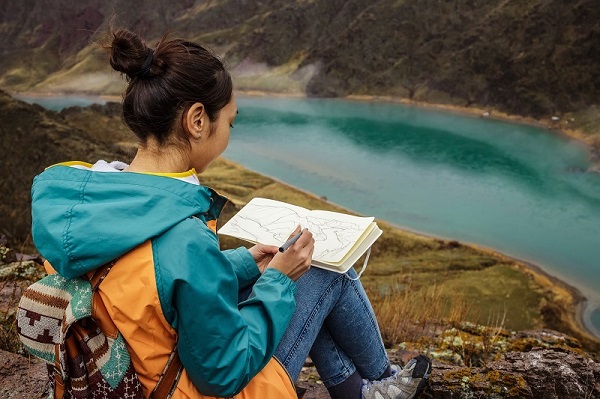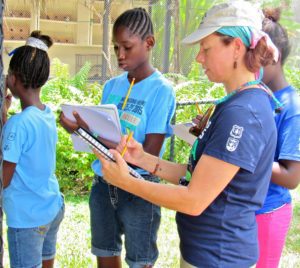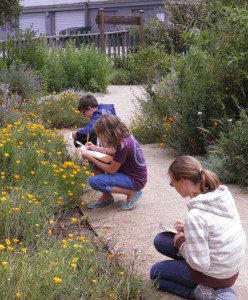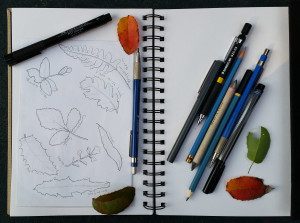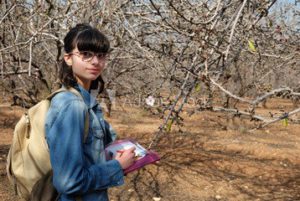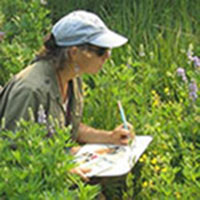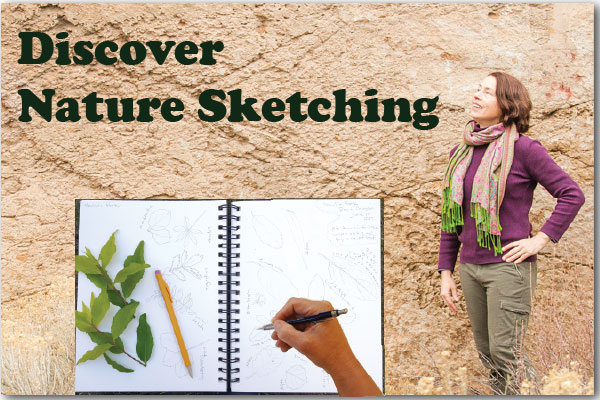Keeping a nature journal is a time-honored tradition, practiced throughout history; from the ancient Greeks to naturalists like Darwin, Audubon and Muir. Traditionally, its main purpose was to keep a record of one’s observations to learn about the principles governing the natural world. But we are now learning about its many secondary benefits, which have inspired many educators to incorporate nature journaling practices into their own studies.
In my own work as a naturalist and environmental educator, I have been lucky to teach kids in a wide variety of situations. No matter who I’ve taught; from inner-city youth in Kingston, Huichol children in a Mexican village, or so-called privileged students in my own state, they’ve nearly always been profoundly inspired by the process of nature journaling.
Below you’ll find some tips for when you’re just getting started sharing the joy of nature journaling with the youth in your life. It’s focused on teaching middle school-aged kids, but can easily be modified for younger or older audiences.
Surprising Benefits of a Nature Journaling Practice
Here’s a short list of the many benefits of starting a journaling practice with your students and family. I’m sure you’ll come up with many more as you dive into the process!
- A shared family activity, which can be enjoyed by all ages and abilities.
- A healthy pursuit, combining both mental stimulation and physical activity.
- Allows time for quiet contemplation, meditation, and mindfulness of your surroundings.
- Provides a much-needed break from our technology-filled world.
- Deepens observational skills, balancing out the use of all five
- Strengthens hand-eye coordination.
- Pride of accomplishment in creating instead of consuming, stimulating more areas of the brain.
- Leaves a record of your experiences, more personal and cherished than simply a smartphone full of photos.
- A multi-disciplinary activity that can incorporate such diverse subjects as science, language arts, visual arts, and even math!
Before you start – addressing common fears
- Give encouragement & praise without judgment or too much focus on the art component, such as“ I can see you noticed the details of this insect’s wing” or “you matched the shade of green on this leaf very closely.”
- Emphasize the benefits of the process of observing and documenting what one sees, de-emphasize the product.
- Talk about what you learned about the plant, animal or landscape you studied through the process of sketching and writing about it.
- Participate equally, and bravely in journaling activities, so you model fearless behavior and the pure joy of discovery.
Hints for a successful nature journaling experience
- Keep materials simple, starting with just a journal (I prefer spirally bound and hard covered) and a mechanical pencil (stays sharp and doesn’t need a sharpener).
- Provide a sturdy surface to journal on for comfort and stability in the field, like a clipboard.
- Keep your journal handy for impromptu observations, and perhaps keep an extra in your car, purse, or daypack.
- Bring visual aids for deeper observations (magnifying lens, binoculars, camera) and field guides.
- Wear appropriate clothes for the outdoors and bring along snacks, drinks, sunscreen and a first-aid kit.
- If you can’t get outdoors, observe nature indoors at home (houseplants, fruits, a vase of flowers, pets) or at a museum, arboretum, zoo, farm).
- Begin a collection of natural objects, a veritable ‘cabinet of curiosities’ so you’ll never be without something inspirational to observe (such as dried leaves, seed pods, feathers, seashells, etc.)
Journaling Prompts to Get You Started
First, take some time to deeply observe the natural world around you; as if you’re a scientist on an exploring expedition, then document your observations in your journal with your choice of words, sketches, and collections.
1) Observe:
- Look intently: Notice things like size, shape, color, behavior. Is there more than one, and if so, what are their relationships to each other; like a herd of deer, a hawk eating a mouse, a robin and its mate. Seek out evidence of activity; like footprints, scat, a nest. When observing several of the same types of plant or animal, notice the subtle similarities and differences between them and think about the reasons (age, gender, season, health, habitat).
For the activities below, try closing your eyes occasionally since vision tends to dim out the other senses:
- Touch gently: Feel the cool breeze on your cheek, touch the bumps on a seashell, the texture of a tree trunk.
- Smell deeply: Is there a pleasant scent or foul odor in the air? Is it earthy, flowery, pungent or sweet?
- Listen intently: Notice the cooing of a dove, wind in the pines, or the gurgling of a flowing stream.
- Speak softly: Talk quietly to yourself as you make your observations, describing in detail what you’re observing as if pretending that a friend who isn’t there must draw a picture based only on your words. Be very specific, noting the bright orange of a sunflower, the smoothness of a stone, the loamy scent of the forest floor.
2) Document
- Write clearly: Put your observations into words; in the form of a description, story or poem. Write down any questions that come to mind that you’d like to research later, such as the who, what, when, where, and why of what you’ve observed.
- Draw lightly: Put your observations into sketches; drawing the plant, animal, landscape, or cloud formation you observed. Or be more diagrammatic and draw a map of a trail you hiked or a cross-section of a pond.
- Collect gently: Add nature treasures to your journal, like leaves, flowers, feathers. Be mindful of any dangers from touching, or of any laws protecting those things. Instead, you may choose to add photos or collage to your journal once you get home.
- Think deeply: How do you feel after this session of nature observations? Summarize all that you’ve observed, and connect what you learned today to past observations. What physical and emotional feelings has this journaling session brought up for you? Curiosity, peace, or a restlessness to explore further down the trail?
Topics to weave in for different disciplines
A wonderful benefit of developing a nature journaling practice is that you can seamlessly weave in a variety of topics to encourage and deepen cross-curricular connections. Here are just a few to inspire you, the possibilities are nearly endless:
- Sciences: Lifecycles, food webs, habitats, ecosystems, anatomy, ecology, behavior, astronomy, geology.
- Visual arts: Observational drawing, depicting landscapes with depth and perspective, color theory in mixing to match shades and tints, elements of art; including line, shape, form, color, value, texture.
- Language arts: Practice expository, descriptive, and narrative writing styles, improve spelling, grammar, and vocabulary.
- Math: Count the number of ladybugs, measure the dimensions of a pine cone, time the seconds a hummingbird visits a flower, triangulate the height of a tree, compare the thickness of sedimentary rock layers.
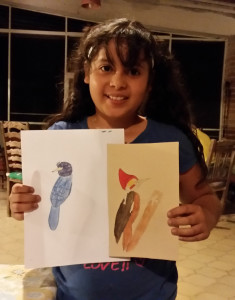
Wrapping Up and Going Beyond the Basics
As you begin to explore a regular nature journaling practice, your skills will improve and your desires to learn more will increase. You’ll aspire to write with more clarity, draw with more accurateness and learn about the flora, fauna, and natural phenomena that you’re observing. This is a natural and welcome progression that can lead to a lifetime of learning and improve the quality and depth of your practice. And starting children off young in this pursuit will create nature-connected kids.
Discover Nature Sketching Course
If you’ve found this article useful, and want to learn more, check out my online course, Discover Nature Sketching.

